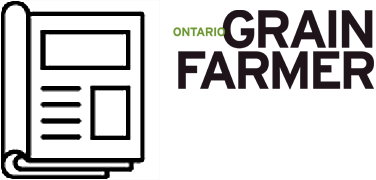Validation of Ontario N rate recommendations in relation to increased yield and 4R practices in corn
Principal Investigator: Adrian Correndo
Research Institution: University of Guelph
Objectives:
- Consolidate a legacy database of existing experiments studying yield response of corn to nitrogen fertilization.
- Revisit the current corn N recommendations and redesign an interactive Ontario Corn N Calculator.
- Design and propose experimental research projects to fill gaps in data. This would be a future phase in this project.
Impacts:
- Better determination of N rate each year will allow for improved profitability for corn production, either in the form of increased yield, reduced inputs, or both.
- Improved recognition of how 4R practices affect the Maximum Economic Rate of Nitrogen (MERN) will allow for better utilization and improved expectation of response from nitrogen fertilizer applications. This will give farmers more confidence when making investments to apply different fertilizer strategies such as split application, enhanced efficiency fertilizers, banding applications, etc.
- Policy makers have promoted goals for reductions in negative environmental aspects of N fertilization, including greenhouse gas reductions. Ontario corn producers will be better able to understand profitable ways to reduce N losses in their own systems, and thereby reduce N losses to the environment, including N2O and other greenhouse gasses.
Scientific Summary:
Current nitrogen fertilizer recommendations for corn from OMAFA are viewed by producers and consultants to be outdated, with few updates to the Ontario Corn N Calculator in the past 20 years. In that time, corn yields across Ontario have increased dramatically, leading to the perception that OMAFA’s corn N recommendations may not reflect how corn responds to nitrogen in a higher yield environment. There is a renewed interest from Ontario farmers in managing nitrogen fertilizers more efficiently in corn production, due to several recent challenges, including nitrogen price volatility, fertilizer supply issues, and a focus on reduction of greenhouse gas emissions from fertilizer application. Corn producers across the province are using a variety of 4R practices to improve efficiencies on their farms, including (but not limited to) effects of the right source – effects of nitrogen stabilizers, the right rate – through yield trials, the right time – multiple split application timings, and the right place – increased N through banding, strip till, injection, among others.
The key objective of this project is to validate the 4R practices of nitrogen application in corn, to improve profitability within corn production though better determination of the right rate of nitrogen. Nitrogen rate trials are conducted regularly in Ontario research in a variety of different forms, but the data from this research may not be directly applicable to certain soil types, production practices, or productivity levels. This project will consolidate the available research that has been conducted, to identify any gaps in N response data for corn and allow for targeted field trials in future years to fill these gaps. If enough data already exists within the database that shows updating or adjustments can be made to tools such as the Ontario Corn N Calculator, these updates can be made at the conclusion of this project. Any data generated will be looked at through an agronomic, economic, and environmental focus to ensure that recommendations follow existing best management practices and make sense for farmers to adopt.
External Funding Partners:
This project is funded in part by the Ontario Agri-Food Research Initiative (OAFRI); OAFRI is funded through the Sustainable Canadian Agricultural Partnership (Sustainable CAP), a 5-year, federal-provincial-territorial Initiative.

